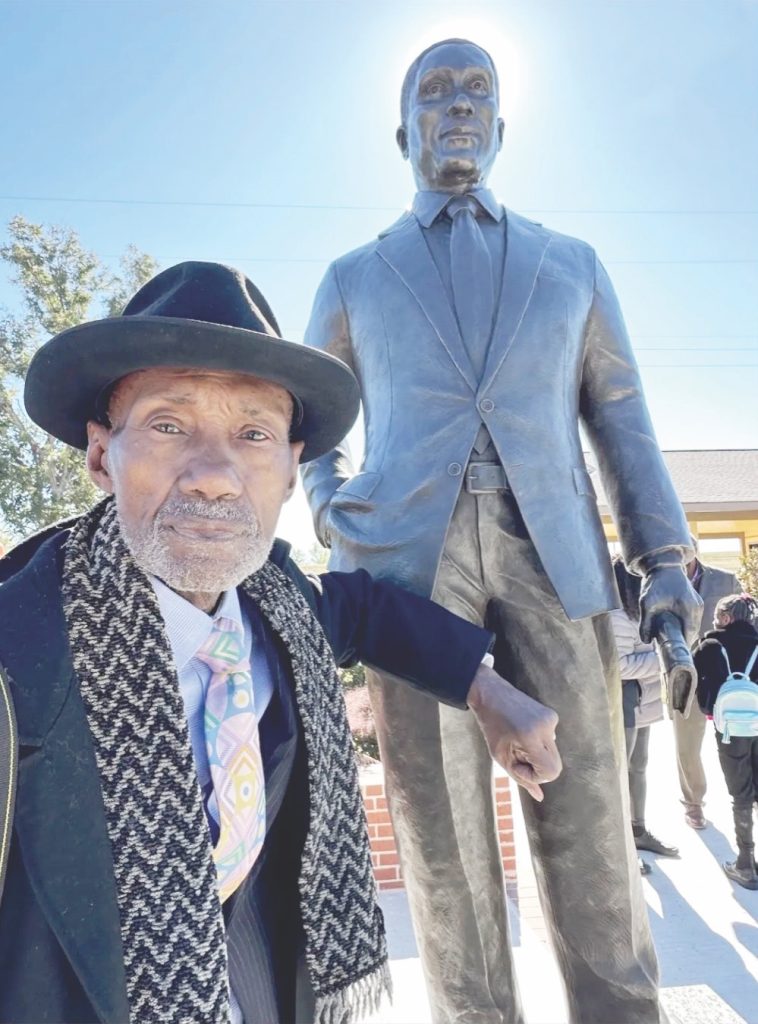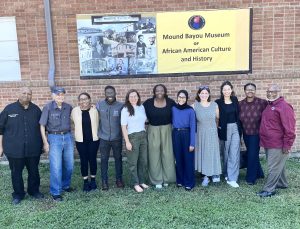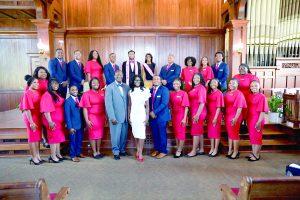By Alice Thomas-Tisdale
JA Publisher Emerita
In November 2023, Arkansas officials unveiled a statue commemorating African American magazine publisher John H. Johnson at the Delta Heritage Trail State Park in Arkansas City, and awarded the inaugural John H. Johnson Media and Journalism Award to famed photographer Roy Lewis, U.S. Rep. Danny K. Davis, and Coach Larry Clark. Lewis hails from Natchez, MS.
“Quite an honor,” said Lewis, who began his storied journalism career working for Johnson in Chicago and whose iconic work is regularly featured in The Washington Informer.
Also in November 2023, Lewis, now 86, was in his home state for the 50th year commemoration of the Jackson State University Phillis Wheatley Poetry Festival, the brainchild of famed writer/poet Margaret Walker.
Lewis traveled to Jackson, Mississippi, to photograph the original festival in 1973 of Black women writers such as Margaret Walker, Alice Walker, Sonia Sanchez, and Nikki Giovanni. However, his visit this time was quite different; he was the one celebrated. His photographs on display for the 50th anniversary exhibition received applause for capturing the essence and significance of African American literary and artistic expression.
For over half a century, Lewis has been taking photos documenting the African American experience that have been seen by people both nationally and globally. He has also ventured into film and documentaries.
Lewis grew up on a Natchez plantation where his father worked as a sharecropper harvesting cotton. His mother died when he was five years and old and he and was raised by his maternal grandparents.
Upon graduation from Sadie V. Thompson High School in 1956, he joined relatives in Chicago and landed a job in the subscription department at Johnson Publishing. In 1960, he was drafted in the United States Army and spent time at bases in Kansas, San Antonio and Houston, Texas. While a soldier, he began to develop his talent as a photographer after purchasing his first camera for just twenty-five dollars.
His career as a photographer began in 1964 when Jet Magazine published his photograph of musician Thelonius Monk. In 1968, Lewis left Johnson Publishing and joined the staff at Northeastern University, filming student activities.
In 1970, Lewis videotaped an exclusive interview with the Honorable Elijah Muhammad, which was featured in the film A Nation of Common Sense. In 1974, Lewis, now working as a full time freelance photographer, traveled to Zaire to film the Ali-Foreman fight. This historic video would later be featured in the Hollywood film When We Were Kings, a remake of the legendary championship fight.
In 1975, Lewis began work on River Road on the Mississippi, a pictorial book focusing on the African American people, life, and cultural along the Mississippi River.
Twenty years later in 1995, Lewis published The Million Man March, a book highlighting the events of that historic day. Lewis also contributed work to the widely acclaimed photo book project, Songs of My People published the same year.
Lewis, who holds a Master of Arts and Community Education from Antioch College, Yellow Springs, Ohio, has received numerous awards for his photojournalism including, the Maurice Sorrell Lifetime Achievement Award.
His 20 minute 1969 black and white film on U.S. poet laureate Gwendolyn Brooks, called Ridin’ and Stridin’, Reachin’, and Teachin’, was screened in 2017 at the Poetry Foundation in Chicago.
Also in 2017, Lewis was highly visible at The Wall of Respect: Vestiges, Shards, and the Legacy of Black Power exhibition, which further confirmed his role as a “chronicler of Black Life.”
The exhibition was held to celebrate a group of Chicago artists, including Lewis, who brought public art to their African American community. The year was 1967. These works became a worldwide phenomenon or the catalyst redefining how people protested globally. The art created by this group of artists was called “The Wall of Respect,” which was located on a building at 43rd Street and Langley Avenue.
As a panelist during the opening of the exhibition, Lewis said: “After 50 years the spirit of ‘The Wall of Respect’ still lives. When you walk into the exhibit, you feel as though you just turned the corner at 43rd and Langley and what you heard and read about is there in front of you.”
Lewis mentioned his early exposure to artists like Langston Hughes and Roy DeCarava, who co-wrote the 1955 Sweet Flypaper of Life, which is a collection of photographs by DeCarava with text by Hughes. He also names the renowned photographer, writer, musician, and film director Gordon Parks as an influence. “I was impressed by others, and I wanted to get out into the street and start taking photographs.”
Select photographs by Lewis are in the National Museum of African American History and Culture’s collection.






